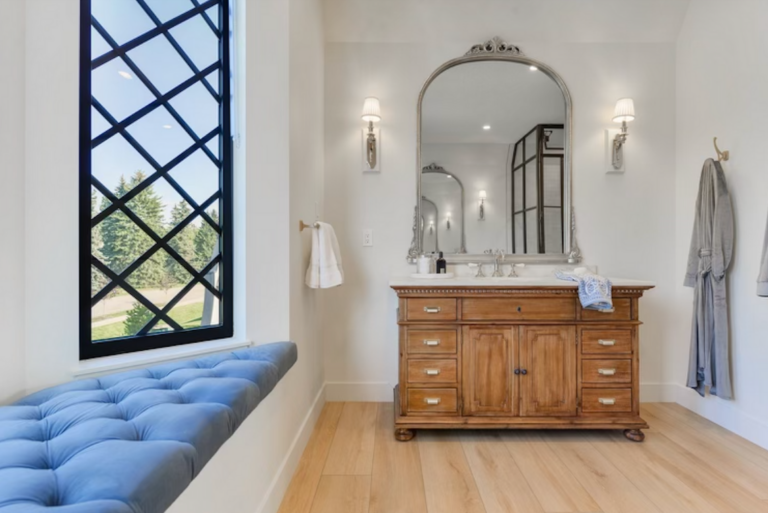To help customers understand the variations in interior workmanship and materials that impact both price and durability, the American Furniture Manufacturers Association offers tips for consumers who want to purchase the best quality within their price range.
Comfort & Durability
“There is quality-constructed furniture for every budget,” says Jackie Hirschhaut, vice president of the American Furniture Manufacturers Association. “Understanding interior features will help you make the best purchase in your price range.”
Four basic components create the comfort and durability of your upholstered furniture: the frame, the supporting foundation, the cushioning and the fabric.

The Frame
Historically, the more durable frames were made of kiln-dried hardwood, such as oak, alder, birch or maple. Drying ensured the frame would resist warping, and hardwood species were preferred because they hold pegs, screws, staples and nails securely in place for a long time.
However, because of technological improvements over the last decade, frames made of hardwood plywood are now among the most durable. Other materials that perform well include steel, plastic, strand board, softwood plywood or some combination of materials.
Regardless of the framing material, more durable pieces are constructed with reinforcements that are glued and screwed into place at critical joints and stress points. Less durable pieces may only staple the support blocks in place or contain none.
Shopping checklist
- Ask what materials are used in the frame.
- Make sure it feels sturdy, sits squarely on the floor, and doesn’t creak or wobble.
- Look at the underside for interior corners that are braced with corner blocks.
The Foundation
The frame style and the amount of support desired determine the type of foundation used in constructing upholstery. Eight-way, hand-tied, coil spring construction was once considered the hallmark of quality upholstery. In this type of foundation, each coil spring is placed in the seat by hand and tied into place with twine in a series of interlocking knots.
Although eight-way, hand-tied coils are still a mark of fine craftsmanship, other construction techniques, including new steel spring configurations, offer equal comfort and durability. In general, the number of springs and how they are reinforced determines cost and quality.
Shopping checklist
- Ask what materials are used in the frame.
- Make sure it feels sturdy, sits squarely on the floor, and doesn’t creak or wobble.
- Look at the underside for interior corners that are braced with corner blocks.
Cushioning
Depending on the product’s design, the back and seat cushions may include a combination of springs, cotton or polyester fiber, foam or down. Most upholstery cushions are made from some type of polyurethane foam. Density is used to gauge the durability of foam, and, generally, the higher the density the more durable (and more expensive) the cushion will be. Better quality upholstered furniture uses foam with a density rating of 1.8 to 2.75.
Foam cushions should be wrapped or covered to protect the foam from direct contact with the upholstery fabric.
Shopping checklist
- Sit. Slump. Sprawl out! The best way to tell if the cushioning is right for you is to feel it in just the manner you’ll be using the piece at home.
- If durability is a key factor in your purchase, find out how cushions are made, including the density of foam used.
Cover
Options for the color, pattern and texture of your upholstery are virtually unlimited, but cover components fall into just two basic categories: natural and synthetic. Natural components include cotton, linen, silk, wool and, of course, leather. Synthetics include acetate, acrylic, nylon, rayon and polypropylene. Many fabrics are woven with a combination of natural and synthetic fibers.
Fabrics combining a tight weave and durable fibers like nylon or polypropylene are a good choice for active use. Leather is also a popular choice for durability.
Shopping checklist
- Ask about fabric components. Look for high percentages of durable fiber for durability.
- For very active use, look for tightly woven fabrics or leather.

“Apex saved the day and maybe the marriage for us as they came to our rescue on a failed project…John was such a nice man to deal with and everything about our experience there was second to none and they did a beautiful job on the boat cushions !! Thank you so much for the great and timely service… I can understand why your company has been in business for so many years!!!”
